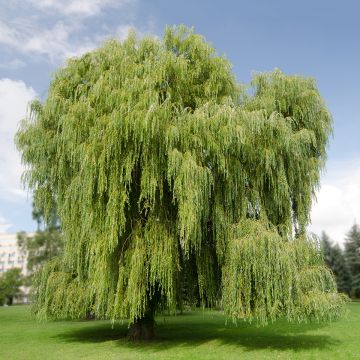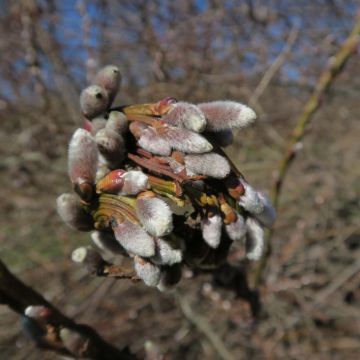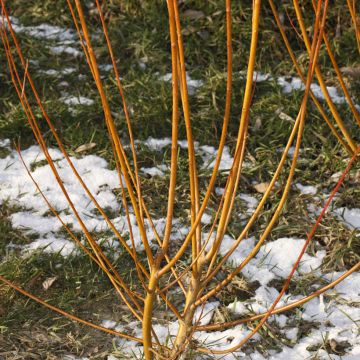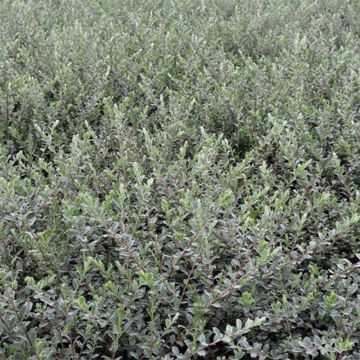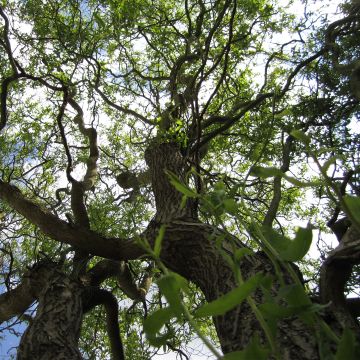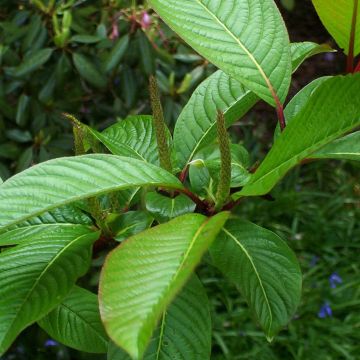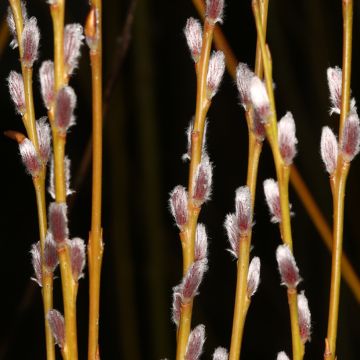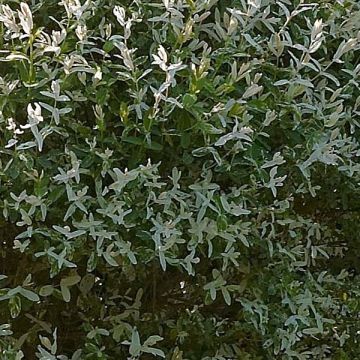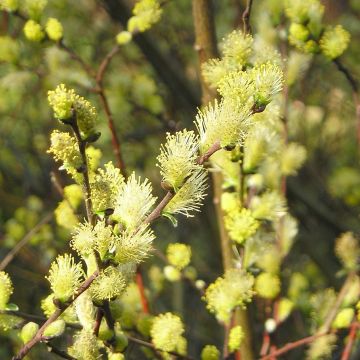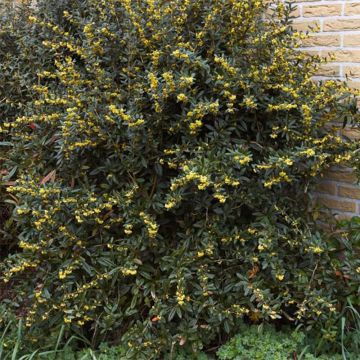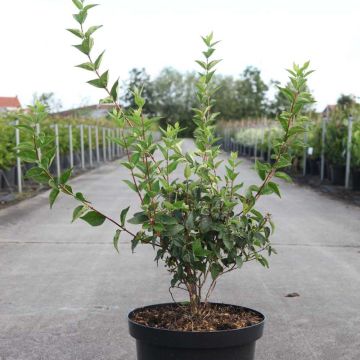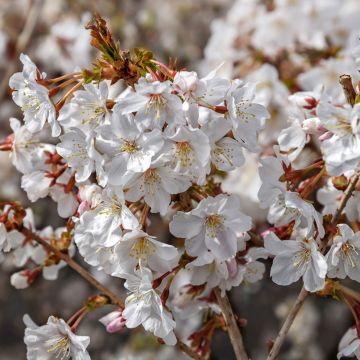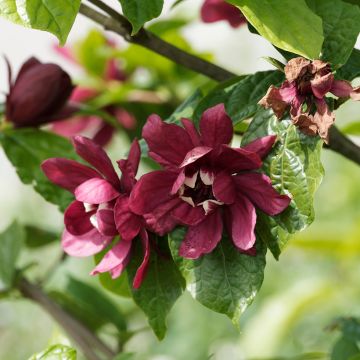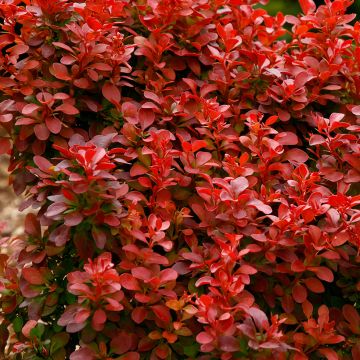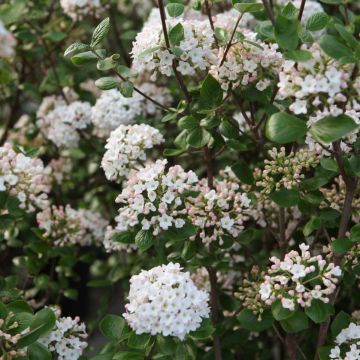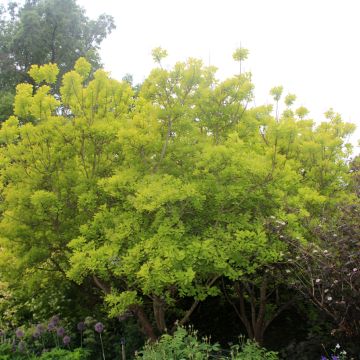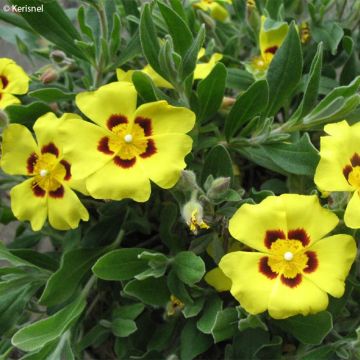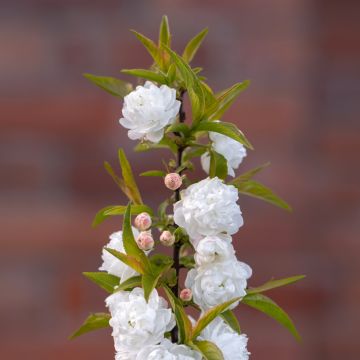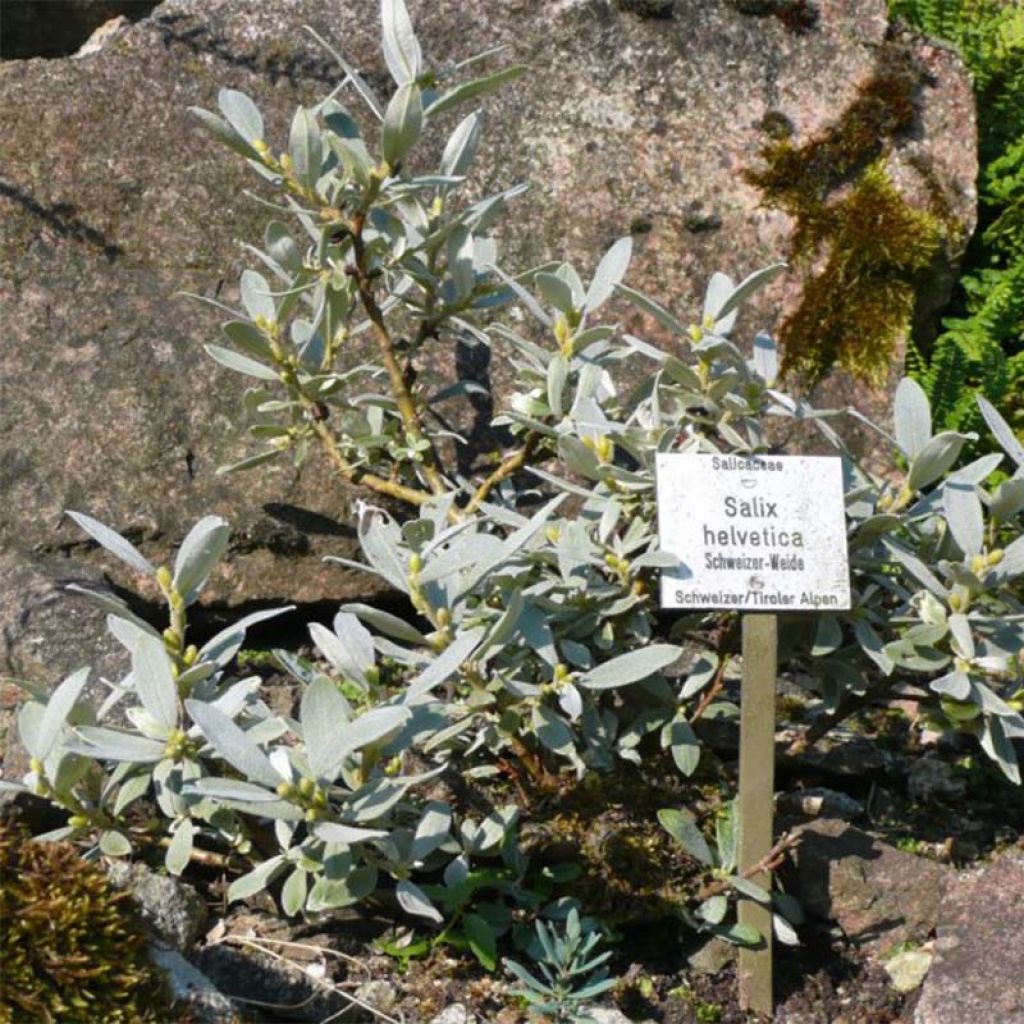

Salix helvetica - Willow
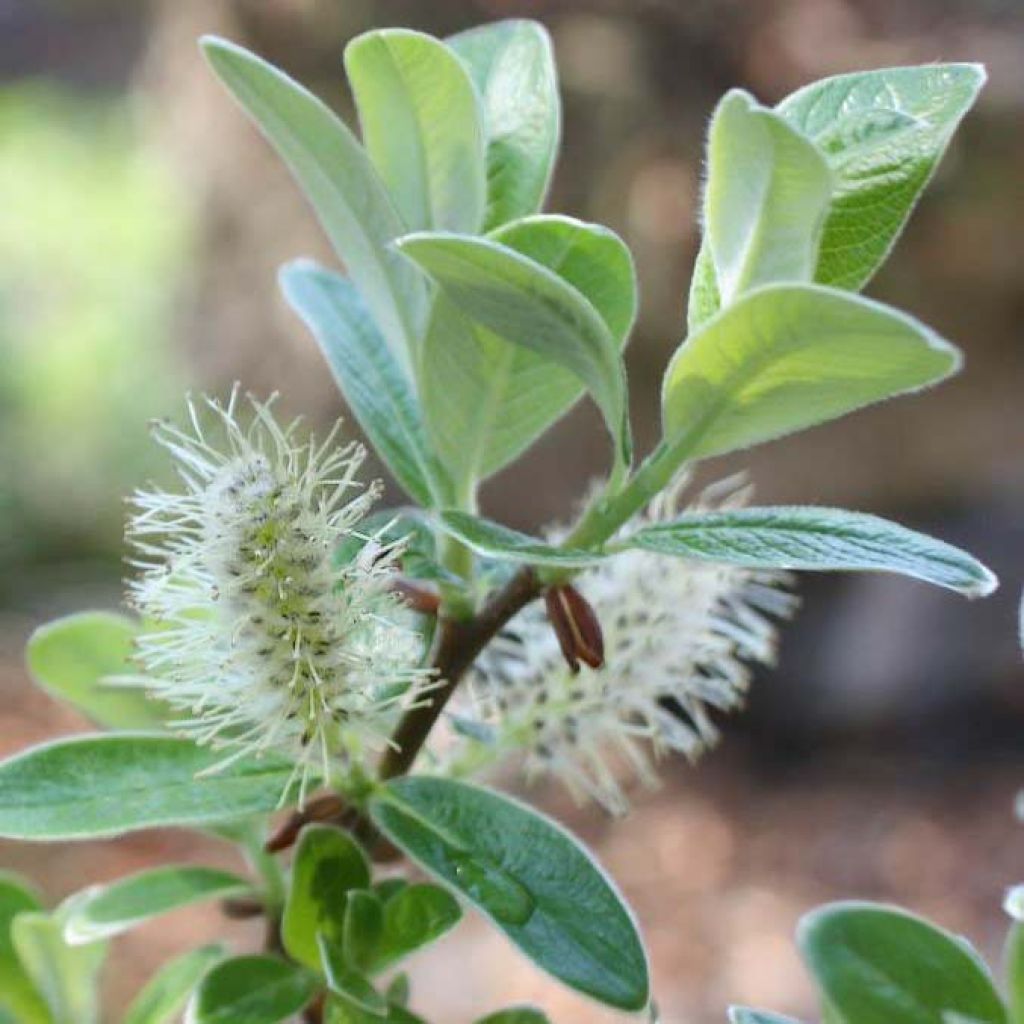

Salix helvetica - Willow
Salix helvetica - Willow
Salix helvetica
Swiss Willow
This item cannot be shipped to the selected country
Delivery charge from €5.90
Delivery to Corse prohibited
More information
Schedule delivery date,
and select date in basket
This plant carries a 24 months recovery warranty
More information
We guarantee the quality of our plants for a full growing cycle, and will replace at our expense any plant that fails to recover under normal climatic and planting conditions.
From €5.90 for pickup delivery and €6.90 for home delivery
Express home delivery from €8.90.
Delivery to Corse prohibited: UE law prohibits the import of this plant from mainland France to Corse as part of the fight against Xylella fastidiosa. Please accept our sincere apologies.
More information
Does this plant fit my garden?
Set up your Plantfit profile →
Description
Salix helvetica, the Swiss willow, is a small but very robust botanical species, native to the European Alps. This bushy and compact shrub is recognizable by its twisted branches, but above all by the white-silver down that covers its foliage and branches, so that its vegetation seems entirely woven with almond-green velvet. Its silky, grey-silver catkins turn yellow when fully open, appearing at the same time as the foliage in April-May. Well adapted to small gardens, and especially to mountain climates, it thrives in the sun in well-drained beds and even in large, cool rockeries.
The Swiss willow belongs to the willow family. It is a deciduous botanical species native to marshy areas and the banks of high mountain streams throughout the European Alps. It is also found in Scotland and Norway. This small shrub has a compact and bushy habit, supported by short and knotty stems, branching near the ground. At maturity in lowland gardens this tiny willow will not exceed 1 metre (3 feet) in all directions. In this species, the entire vegetation is covered with a white and silky down that masks the dark green colour of the foliage and branches. The foliage is deciduous, with small leaves arranged alternately towards the top of the stems, oblong to elliptical in shape, measuring 1 to 3.5 cm (1in) in length. The upper surface is grey-green, covered with silky hairs. The underside is lighter, particularly woolly, and shows a prominent midrib. The very ornamental flowering, takes place in March-April, just before or at the same time as the leaves emerge, depending on the climate. Emerging from large yellow buds, the male flowers of this willow are grouped in ovoid catkins 5 cm (2in) long. The female inflorescences, borne by separate individuals, are slightly shorter. Initially silver and silky, they then release numerous yellow stamens. This flowering is appreciated by bees that come to collect pollen and nectar. It gives way to the formation of capsules that open at maturity to release seeds covered with bristles.
.
Equally charming when planted alone, in a bed or as a low hedge, the Swiss willow, forged in knotty wood, possesses the unique and somewhat rugged charm of mountain plants. Its beautiful downy and silvery vegetation will be highlighted in a sober and rocky environment or in a flowery meadow, accompanied by plants chosen for their robustness. This shrub also has its place in contemporary gardens, often urban and small in size. Prune it every three years after flowering to encourage it to thicken and produce many flowering branches. For example, it can be associated with perennial plants and shrubs from mountainous regions such as savory, sunroses, purple broom, Arabis, Alyssum, and bellflowers. In an infoemal hedge with well-drained soil that remains moist, it can be combined with spring-flowering shrubs such as flowering cherry trees, ornamental apple trees, or even purple Berberis. Consider creating bouquets with its branches adorned with silky catkins. In a vase, they beautifully complement those of the Prunus triloba and other flowering cherry and plum trees that will be awakened by the warmth of the house.
Report an error about the product description
Salix helvetica - Willow in pictures
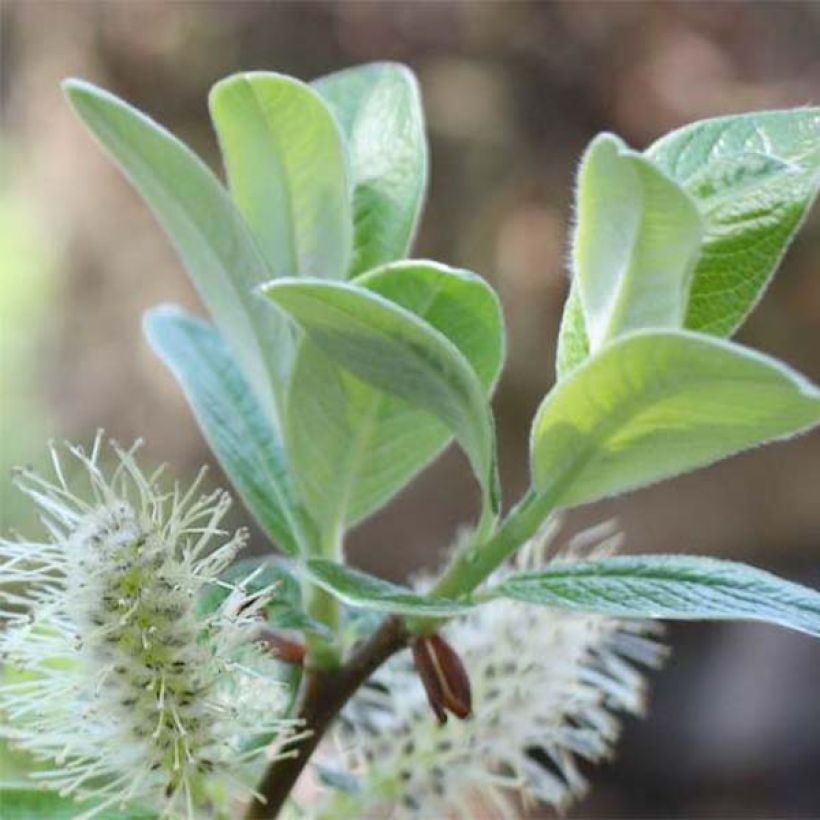

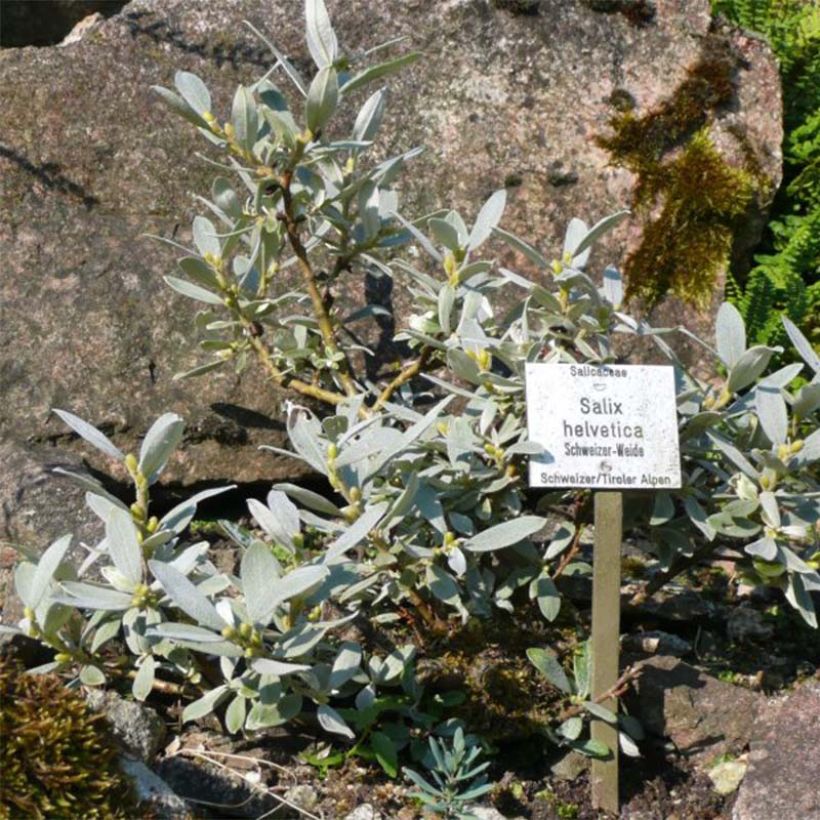

Plant habit
Flowering
Foliage
Botanical data
Salix
helvetica
Salicaceae
Swiss Willow
Alps
Other Willow - Salix
Planting and care
Plant the Swiss Willow in autumn, in a very sunny location. It requires well-drained soil, preferably slightly acidic, neutral to limestone but remaining moist throughout the year. This mountain willow dislikes heatwaves and excessively dry soils. Ideally, use a mixture composed of half potting soil and half garden soil mixed with coarse sand when planting, if your soil is clayey and heavy. It is perfectly resistant to cold and severe frosts. To promote a bushy habit and the formation of catkin-bearing branches, prune after flowering, every 2 or 3 years.
Diseases and pests of willows:
The leaves and branches are susceptible to various fungal diseases. Collect all the leaves in autumn, burn them, and treat with Bordeaux mixture. Many insects such as aphids, crioceris beetles, and caterpillars devour the foliage.
Planting period
Intended location
Care
This item has not been reviewed yet - be the first to leave a review about it.
Spring-flowering shrubs
Haven't found what you were looking for?
Hardiness is the lowest winter temperature a plant can endure without suffering serious damage or even dying. However, hardiness is affected by location (a sheltered area, such as a patio), protection (winter cover) and soil type (hardiness is improved by well-drained soil).

Photo Sharing Terms & Conditions
In order to encourage gardeners to interact and share their experiences, Promesse de fleurs offers various media enabling content to be uploaded onto its Site - in particular via the ‘Photo sharing’ module.
The User agrees to refrain from:
- Posting any content that is illegal, prejudicial, insulting, racist, inciteful to hatred, revisionist, contrary to public decency, that infringes on privacy or on the privacy rights of third parties, in particular the publicity rights of persons and goods, intellectual property rights, or the right to privacy.
- Submitting content on behalf of a third party;
- Impersonate the identity of a third party and/or publish any personal information about a third party;
In general, the User undertakes to refrain from any unethical behaviour.
All Content (in particular text, comments, files, images, photos, videos, creative works, etc.), which may be subject to property or intellectual property rights, image or other private rights, shall remain the property of the User, subject to the limited rights granted by the terms of the licence granted by Promesse de fleurs as stated below. Users are at liberty to publish or not to publish such Content on the Site, notably via the ‘Photo Sharing’ facility, and accept that this Content shall be made public and freely accessible, notably on the Internet.
Users further acknowledge, undertake to have ,and guarantee that they hold all necessary rights and permissions to publish such material on the Site, in particular with regard to the legislation in force pertaining to any privacy, property, intellectual property, image, or contractual rights, or rights of any other nature. By publishing such Content on the Site, Users acknowledge accepting full liability as publishers of the Content within the meaning of the law, and grant Promesse de fleurs, free of charge, an inclusive, worldwide licence for the said Content for the entire duration of its publication, including all reproduction, representation, up/downloading, displaying, performing, transmission, and storage rights.
Users also grant permission for their name to be linked to the Content and accept that this link may not always be made available.
By engaging in posting material, Users consent to their Content becoming automatically accessible on the Internet, in particular on other sites and/or blogs and/or web pages of the Promesse de fleurs site, including in particular social pages and the Promesse de fleurs catalogue.
Users may secure the removal of entrusted content free of charge by issuing a simple request via our contact form.
The flowering period indicated on our website applies to countries and regions located in USDA zone 8 (France, the United Kingdom, Ireland, the Netherlands, etc.)
It will vary according to where you live:
- In zones 9 to 10 (Italy, Spain, Greece, etc.), flowering will occur about 2 to 4 weeks earlier.
- In zones 6 to 7 (Germany, Poland, Slovenia, and lower mountainous regions), flowering will be delayed by 2 to 3 weeks.
- In zone 5 (Central Europe, Scandinavia), blooming will be delayed by 3 to 5 weeks.
In temperate climates, pruning of spring-flowering shrubs (forsythia, spireas, etc.) should be done just after flowering.
Pruning of summer-flowering shrubs (Indian Lilac, Perovskia, etc.) can be done in winter or spring.
In cold regions as well as with frost-sensitive plants, avoid pruning too early when severe frosts may still occur.
The planting period indicated on our website applies to countries and regions located in USDA zone 8 (France, United Kingdom, Ireland, Netherlands).
It will vary according to where you live:
- In Mediterranean zones (Marseille, Madrid, Milan, etc.), autumn and winter are the best planting periods.
- In continental zones (Strasbourg, Munich, Vienna, etc.), delay planting by 2 to 3 weeks in spring and bring it forward by 2 to 4 weeks in autumn.
- In mountainous regions (the Alps, Pyrenees, Carpathians, etc.), it is best to plant in late spring (May-June) or late summer (August-September).
The harvesting period indicated on our website applies to countries and regions in USDA zone 8 (France, England, Ireland, the Netherlands).
In colder areas (Scandinavia, Poland, Austria...) fruit and vegetable harvests are likely to be delayed by 3-4 weeks.
In warmer areas (Italy, Spain, Greece, etc.), harvesting will probably take place earlier, depending on weather conditions.
The sowing periods indicated on our website apply to countries and regions within USDA Zone 8 (France, UK, Ireland, Netherlands).
In colder areas (Scandinavia, Poland, Austria...), delay any outdoor sowing by 3-4 weeks, or sow under glass.
In warmer climes (Italy, Spain, Greece, etc.), bring outdoor sowing forward by a few weeks.

































